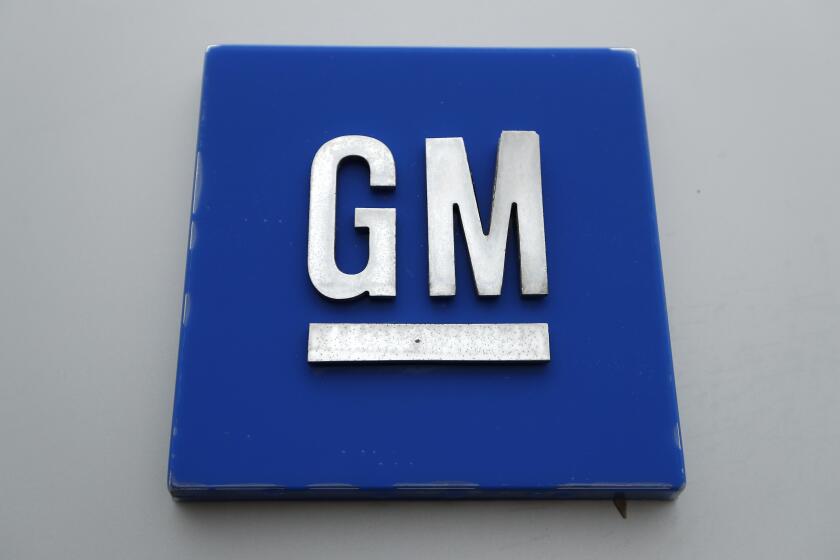IPOs fall to 7-year low, but a rebound is expected next year

- Share via
Fewer companies went public in 2016 than in any year since the 2008-09 financial crisis, as a series of stock market hiccups from “Brexit” to the U.S. presidential election cooled demand for initial public stock offerings.
But the coming year could make up for 2016 malaise, as the pipeline of companies looking to go public is well stocked with IPO candidates.
Two reports out this month — Ernst & Young’s Global IPO Trends study and Renaissance Capital’s U.S. IPO Market Annual Review — are optimistic about a rebound in companies going public, despite lingering uncertainty around the European Union, the new U.S. administration and China’s growth prospects.
“The most important catalyst for an IPO is how the existing ones have done,” said Kathleen Smith, principal at Renaissance Capital, a Maryland-based manager of IPO-focused Exchange Traded Funds. “The returns are such that there is nothing in the way. Companies should be filing right and left when we return from the holidays.”
Based on Renaissance’s data, the average stock price increase for 2016 IPO companies on U.S. exchanges is 22.5%. Its Private Company Watchlist contains 277 companies likely to go public in the next 12 to 24 months.
“I think we’ll see 2017 being a lot better than 2016 now that there is some stability, at least in the U.S.,” said Tim Holl, a San Diego partner with Ernst & Young. “The election is behind us. There is obviously some momentum in the market. So there is an expectation that 2017 is going to be better.”
The numbers vary slightly between the Ernst & Young and Renaissance Capital reports, but the trends are similar.
Ernst & Young reported 112 companies raised $21.3 billion in IPOs this year in the U.S., down more than 35% from the prior year.
Renaissance pegged the number of IPOs at 105, with $18.8 billion raised. That’s down from 170 companies raising $30 billion a year earlier.
A steep stock market sell-off early this year froze out potential IPO companies in the first quarter. In June, Brexit — the British referendum to exit the European Union — shook up investors again. Finally, the U.S. presidential election whipsawed markets toward year end. The Standard & Poor’s 500 stock index is up 11% for the year, through Friday.
Many companies that did go public in 2016 did so at a discount, said Smith of Renaissance Capital. They lowered their proposed prospectus stock price range prior to their IPOs, or they priced shares below publicly traded peers.
“Once private companies saw that, they were thinking maybe we should wait a little longer,” she said. “There has been a lot of private capital that has been able to sustain these private companies longer than normal.”
Another reason for the IPO slowdown, particularly for technology companies, is sky-high valuations for high-profile firms, including Uber, Snapchat (now called Snap), Dropbox, Spotify and Airbnb.
The valuations created a chasm between what venture capitalists bet a company would be worth and what IPO investors are willing to pay. It led several big tech outfits to stay on the IPO sidelines this year.
Will that ease next year? It’s unclear. But with growing pressure on venture capitalists to find exits for aging portfolio companies — coupled with another year for these companies to grow in hopes of justifying their lofty valuations — more tech firms are expected to test public markets in 2017, Renaissance Capital says. Snap already has filed for a $4-billion IPO that could value the company as high as $40 billion.
Nationwide, healthcare, which includes life sciences, was the top industry sector for IPOs this year, with 40 firms going public, according to Ernst & Young. Technology ranked second with 23 deals.
Shares of new healthcare IPOs haven’t always performed well, however. Nine of the 10 worst-performing IPOs this year are healthcare firms, Renaissance Capital’s data show.
Holl of Ernst & Young said the IPO window opened wide for the life sciences sector from 2013 to 2015, encouraging companies to go public earlier than they usually do.
Now the pendulum has swung back. Life sciences firms are going public later in a drug/medical device development cycle — which could improve post-IPO performance, he said.
“Good companies will get out,” Holl said. “I think you will see activity in the first quarter and second quarter. I can’t mention any names, but you’ll see activity.”
Freeman writes for the San Diego Union-Tribune.
ALSO
The time is right to buy a used car
This $1,499 gadget hopes to do for tea what Keurig did for coffee
Republicans plan to overhaul the tax system. Here’s what they’re thinking so far
More to Read
Inside the business of entertainment
The Wide Shot brings you news, analysis and insights on everything from streaming wars to production — and what it all means for the future.
You may occasionally receive promotional content from the Los Angeles Times.










